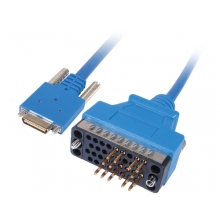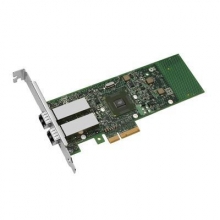- Optical Transceivers
- SFP+ Transceivers
- XENPAK Transceivers
- XFP Transceivers
- X2 Transceivers
- SFP Transceivers
- Compatible SFP
- 3Com SFP
- Alcatel-Lucent SFP
- Allied Telesis SFP
- Avaya SFP
- Brocade SFP
- Cisco SFP
- D-Link SFP
- Dell SFP
- Enterasys SFP
- Extreme SFP
- Force10 SFP
- Foundry SFP
- H3C SFP
- HP SFP
- Huawei SFP
- Intel SFP
- Juniper SFP
- Linksys SFP
- Marconi SFP
- McAfee SFP
- Netgear SFP
- Nortel SFP
- Planet SFP
- Q-logic SFP
- Redback SFP
- SMC SFP
- SUN SFP
- TRENDnet SFP
- ZYXEL SFP
- Other SFP
- FE SFP
- GE SFP
- OC3 SFP
- OC12 SFP
- OC48 SFP
- Copper SFP
- CWDM SFP
- DWDM SFP
- BIDI SFP
- Fiber Channel SFP
- Multi-Rate SFP
- SGMII SFP
- Compatible SFP
- GBIC Transceivers
- Passive Components
- Networking
- Cables
- Equipments
- Tools
- Special Offers


EXFO details measurement of 528-Gbps signals
In a post-deadline paper delivered at last month’s ECOC conference in Geneva, researchers at EXFO Inc. (NASDAQ: EXFO, TSX: EXF) and Chalmers University in Goteborg, Sweden described the use of the company’s PSO-200 Optical Modulation Analyzer to measure a 528-Gbps transmission using polarization-multiplexed 16-ary quadrature amplitude modulation (16-QAM). The success of the demonstration highlights the capabilities of the company’s use of optical sampling for the PSO-200, EXFO asserts.
While the industry has settled on coherent-enabled modulation formats such as dual-polarization quadrature phase shift keying (DP-QPSK) as the most common modulation format for 100-Gbps transmission, higher data rates will likely require a different modulation approach. 16-QAM has emerged as one candidate for data rates such as 400 Gbps. However, as complex as DP-QPSK can be, 16-QAM represents a higher level of complexity and a potentially major challenge for test and measurement, particularly in terms of handling the baud rates required.
EXFO has long asserted that its optical sampling approach would enable measurement of higher baud rates than the real-time sampling strategy championed by competitors such as Agilent Technologies and Optametra (recently acquired by Tektronix) because its performance isn’t bounded by the current state of the art in analog-to-digital converters and digital signal processing (for example, see “Characterizing advanced modulation formats using optical sampling” from the February 2010 edition of Lightwave).
The demonstration reported at ECOC illustrates this point, said Greg Shinn, R&D director at EXFO, in a conversation after the show. As described in the ECOC paper, technicians amplified a pair of binary electrical PRBS15 signals at 66 GBd and applied them to a 31-GHz bandwidth IQ modulator to create a QPSK signal on a 100-kHz linewidth optical carrier. The QPSK was then up-converted to 16-QAM via a QAM emulation device from Kylia. The emulator combined a delayed (500 psec) and scaled (1:4 power ratio) copy of the signal to itself. The splitting ratio was controlled by rotatable waveplates, and a variable phase shifter controlled the phase shift between the copies to align them properly.
The resultant 66-GBd 16-QAM signal was then polarization multiplexed by splitting the signal and recombining the copies in orthogonal polarizations using a polarization beam splitter with a large delay between the polarizations. The output from the PM-16-QAM transmitter then passed through a variable attenuator/EDFA combination to vary the OSNR, then through a 2-nm optical filter before it reached the PSO-200.
The PSO-200 then performed both waveform and bit-error-rate measurements of the signal (Chalmers University supplied the data pattern generator that helped create the traffic). Shinn said that the instrument is capable of handling signals of at least 70 GBd, which he asserted is much greater than could be measured using real-time oscilloscopes whose current bandwidth tops out at 35 to 40 GHz.



















































